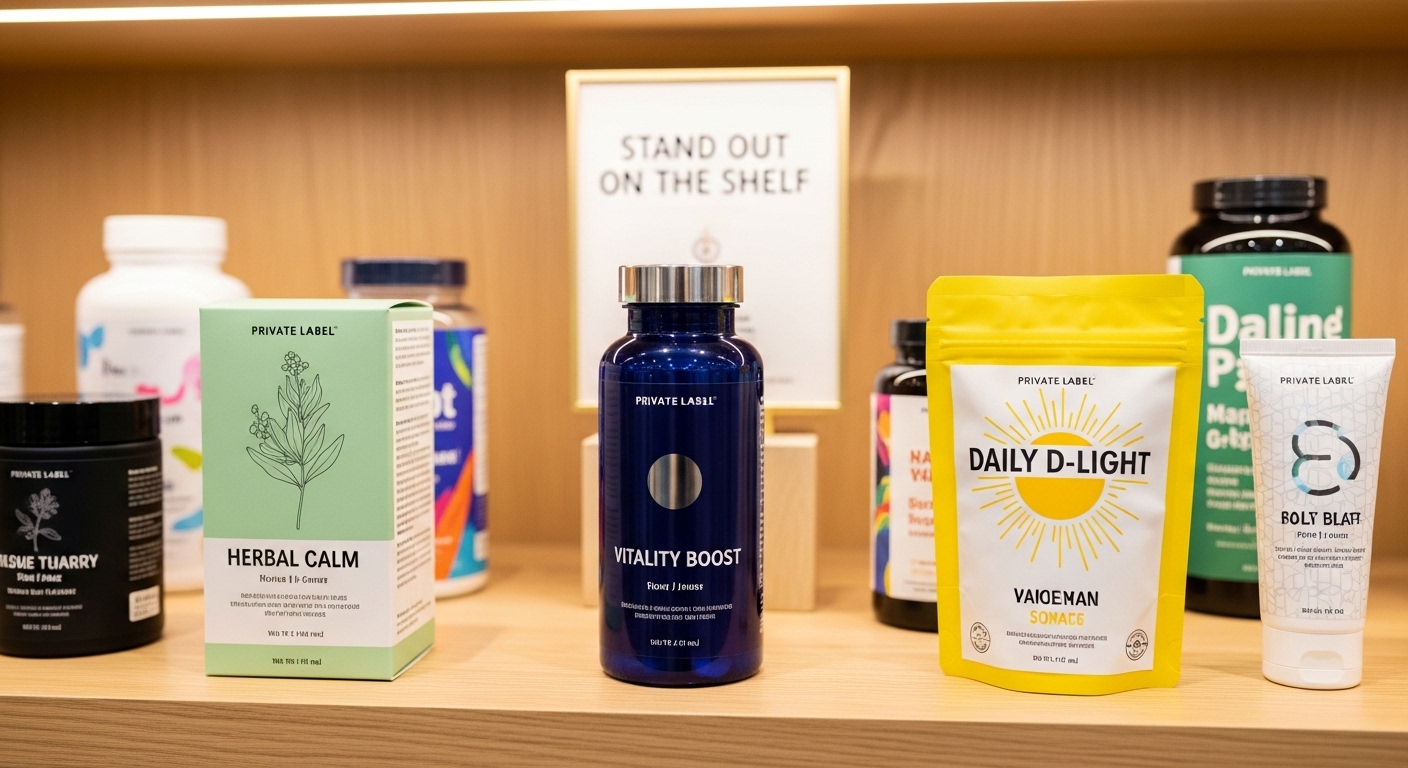Busness
How Seasonal Changes Affect Your Oil Tank’s Condition

Seasonal changes can significantly impact the performance and longevity of your home’s oil tank. Fluctuations in temperature, humidity, and weather conditions can cause condensation to form inside the tank, leading to water buildup and potential corrosion over time. As temperatures drop, oil can also thicken, affecting flow and efficiency, while warmer months may accelerate rust or bacterial growth if the tank isn’t properly maintained. Regular inspections and preventive care are essential for maintaining your system’s optimal performance throughout the year.
To prevent costly damage and maintain efficiency, homeowners should schedule professional maintenance and cleaning before each major seasonal shift. Partnering with reliable experts in oil tank services New Rochelle NY can help ensure your tank remains in optimal condition, minimizing risks and extending its overall lifespan. Staying proactive with maintenance not only preserves the tank but also ensures the reliability of your home’s heating system.
Spring and Summer: The Hidden Dangers
During spring and summer, oil tanks are susceptible to condensation, which happens when warm outdoor air contacts the cooler interior of a partially filled tank. This moisture gathers at the bottom, creating an ideal environment for microbial growth and sludge formation. This sludge can clog fuel lines and decrease system efficiency. To avoid condensation, keep the tank as full as possible, ensure it’s shaded or insulated outdoors, and regularly check for corrosion or paint peeling. Regular maintenance, including removing water and sludge, is essential to prevent issues when heating resumes in fall.
Fall: Preparing for the Cold
As temperatures decline, check your oil tank regularly for leaks, weak spots, or sludge to prevent heating issues. Filling your tank before winter guarantees a consistent fuel supply and reduces condensation risks. Local technicians advise scheduling annual maintenance before the heating season, as preventative upkeep is more affordable than emergency repairs and can help meet insurance and regulatory requirements.
Winter: Battling the Freeze
When temperatures plummet, oil thickens, making it harder to flow through your system—a phenomenon known as “gelling.” Not only can this lead to costly breakdowns and cold nights, but repeated freeze-thaw cycles can also weaken your tank structure and fuel lines. To prevent these issues, use winter-formulated additives that reduce gelling, and insulate any exposed pipes or tanks. Protective coverings help shield your oil tank against snow and ice buildup, which can stress the tank supports and compromise the venting system.
Monitoring your tank for ice accumulation, checking vent pipes, and regularly clearing snow away from outdoor tanks will go a long way in ensuring optimal performance through the harshest months. In regions experiencing prolonged cold snaps, professional insulation or relocating smaller tanks to sheltered areas can further minimize the risks of freezing.
Conclusion
Staying proactive and mindful of seasonal changes is the key to extending your oil tank’s life and ensuring uninterrupted heat through the year. Scheduling inspections, filling your tank before extreme temperatures, investing in quality fuel, and using professional oil tank services can save both money and stress in the long run.
Busness
Employee Gift Trends for a Positive Workplace Today

Recognizing employees through thoughtful gifts has rapidly evolved into an essential part of cultivating a thriving organizational culture. Today, companies are adopting innovative strategies for employee appreciation, offering more than just tokens of gratitude. Choosing meaningful gifts for employees can lead to higher morale, increased engagement, and a more profound sense of belonging in the workplace. This shift in gifting highlights the importance of aligning employee appreciation efforts with modern values and expectations.
Today’s workforce values personalization, ethical practices, and holistic well-being. By staying ahead of gifting trends, organizations not only reinforce positive relationships but also promote loyalty and long-term retention. Such gifts convey to each employee that their unique contribution matters and that their happiness is a top priority. As the workforce and corporate social responsibility standards evolve, gifts can also reflect a company’s broader mission and values.
Innovative companies recognize that a well-chosen, thoughtful gift can serve as both an immediate morale booster and a long-term motivator. This connection between purposeful gifting and workplace satisfaction is backed by research showing employees who feel genuinely appreciated are less likely to leave and more likely to contribute with enthusiasm. In this article, we break down the leading employee gift trends and how companies can implement them to sustain a positive culture today and beyond.
Whether it’s investing in sustainable products, curating wellness experiences, or offering the latest tech gadgets, the right gift can have a lasting impact on your team. Keeping these trends top of mind can help any organization stand out as an employer of choice. According to a recent survey from Harvard Business Review, personalized recognition and thoughtful gifting rank among the top drivers of employee engagement in modern workplaces.
Personalized Gifting
Personalization in employee gifting goes far beyond monogrammed mugs or generic gift cards. Today, organizations are honing in on the likes, interests, and aspirations of their staff. For example, managers are curating book bundles based on employees’ personal or professional interests, or providing customized office décor that reflects each employee’s unique personality. This extra level of attention signals to employees that their contributions are recognized and valued. Studies cited by SHRM show that personalized gestures have a measurable positive effect on employee satisfaction and retention.
Sustainable and Eco-Friendly Gifts
Corporate gifting has shifted in response to mounting environmental concerns. Today, sustainable giving is no longer a mere trend, but an expectation. Many companies opt for reusable, recycled, or compostable products—from stainless steel water bottles to organic cotton tote bags—to demonstrate their commitment to the environment. Thoughtful touches, such as recycled paper journals or bamboo desk organizers, are both functional and eco-conscious. Not only do these choices minimize waste, but they also signal to employees and clients alike that sustainability is a genuine organizational value. This green initiative also supports companies in meeting their Environmental, Social, and Governance (ESG) goals.
Wellness and Self-Care Items
The spotlight on mental and physical wellness at work continues to intensify. According to a Forbes report, demand for wellness-focused corporate gifts has increased significantly today, reflecting a renewed focus on employee health and well-being. Popular wellness gifts include fitness trackers, subscription wellness apps, aromatherapy kits, yoga mats, and curated selections of herbal teas and healthy snacks. By offering items that encourage self-care—whether it’s a relaxing face mask or a meditation journal—employers let their teams know their well-being comes first.
These wellness gifts can help alleviate work-related stress and prevent burnout, which can, in turn, enhance workplace productivity and morale in the long term.
Tech Gadgets
With remote and hybrid work structures likely here to stay, cutting-edge technology gifts remain as relevant as ever today. Employees are eager for tools that streamline workflows and add convenience to their daily routines. High-demand gifts include wireless charging docks, noise-cancelling headphones, digital notebooks, smart coffee mugs with heat control, and even smart water bottles that track daily hydration. These practical yet innovative options make everyday tasks easier—whether balancing meetings at home or collaborating with teams in the office. Forward-thinking organizations understand that investing in employees’ tech toolkit is an investment in both satisfaction and productivity.
Experiential Gifts
Experience-based gifts have risen to the top of many company wish lists today. Rather than giving traditional physical items, employers are offering gift cards, vouchers, and experiences such as culinary classes, concert tickets, or curated weekend getaways. These employee gift experiences align perfectly with the growing desire for a work-life balance and meaningful leisure time. In fact, many workers report that the memories created through experiential gifts are far more impactful than receiving material goods, according to recent research from CNBC. These efforts foster lasting goodwill and deeper emotional engagement between the company and its employees.
Supporting Local Businesses
As organizations become more rooted in their communities, gifting from local businesses has taken on new importance. Unique, locally sourced gifts—ranging from artisan food bundles to handcrafted jewelry and locally produced wellness boxes—not only delight recipients but help reinforce connections to the local economy. These curated selections demonstrate a commitment to supporting small business owners, promoting sustainable regional economic growth, and fostering community solidarity. For today’s socially conscious employees, this local focus often resonates more strongly than generic, mass-produced items.
Conclusion
Keeping pace with the latest employee gift trends today means more than following fads—it’s about embracing a mindset of authenticity, care, and social responsibility. Thoughtful, personalized, and purposeful gifts elevate workplace culture, boost morale, and demonstrate that organizations value their people as individuals. By emphasizing sustainability, well-being, personalization, technology, experiences, and local business support, companies can build a culture of appreciation and engagement that lasts well beyond the gift-giving season.
Busness
Private-Label Design & Packaging: Tips to Make Your Supplement Stand Out on the Shelf

Understanding the Importance of Packaging in the Supplement Industry
As the supplement market becomes increasingly saturated, effective packaging has emerged as a critical strategy for brands striving to capture attention and foster loyalty. Packaging is far more than just a protective layer around your product; it is often the first—and sometimes only—opportunity a brand has to make a favorable impression on shoppers. Not only does packaging serve as the first point of contact between a product and a potential customer, but it also encapsulates the brand’s ethos, safety standards, and unique selling points by communicating both tangible and intangible qualities. This visual handshake can instantly inspire confidence or skepticism, so every aspect must be thoughtfully curated. For brands seeking to differentiate themselves, partnering with private label supplement manufacturers in the USA offers an opportunity to customize packaging that reflects a distinctive identity and message, ensuring products are consistently aligned with brand goals and market trends.
In today’s hyper-visual retail landscape, shelf appeal is non-negotiable. Whether a consumer is browsing online or in a brick-and-mortar store, a supplement’s packaging needs to grab their attention within seconds. Otherwise, it risks being overlooked by a flashier competitor. Research suggests that up to 70% of consumer purchases are driven by visual cues, underscoring why brands cannot afford to treat packaging as an afterthought. Beyond appearance, effective packaging fosters instant trust by providing clear cues about quality, effectiveness, and compliance. Appealing packaging can make a functional health supplement feel like a must-have lifestyle product, encouraging repeat purchases and word-of-mouth recommendations. Brands that invest in design excellence are more likely to form meaningful connections with their audience, helping to drive category growth and repeat business.
Key Elements of Effective Supplement Packaging
- Attractive Art and Images: Eye-catching visuals build immediate connections with target audiences. Strong imagery conveys emotion and energy, reinforcing the lifestyle or health benefits a supplement promises. When graphics resonate with consumers’ aspirations—whether it’s vitality, athleticism, or wellness—they trigger a powerful urge to engage further.
- Legible and Interesting Fonts: Typography strikes a balance between standout style and effortless readability. Consistent font choices help reinforce the brand identity and provide a seamless user experience. Using creative, easy-to-read fonts can make even the most detail-heavy information look inviting and accessible, contrasting well against dynamic backgrounds without sacrificing clarity.
- Unique Label Materials: Innovative materials, such as matte finishes, holography, or embossed details, add both visual and tactile interest, setting products apart from competitors. Consumers are more likely to remember a product they can experience with more than one sense. Premium finishes elevate perceived value, while unusual textures or interactive elements can stimulate curiosity and prompt sharing on social media.
Great packaging appeals to senses beyond just sight. The sense of touch—such as the cool, smooth feel of a glass bottle or the tactile quality of a matte label—can be an integral part of a brand’s unique story. Sound, like a secure click when a lid closes, can enhance perceptions of safety and quality, while clever packaging that interacts with light or features unexpected layers creates intrigue. Turn an ordinary container into a recognizable brand asset by blending sensory details with functional benefits. Keeping up with packaging trends and consumer expectations is essential; brands that fall behind risk seeming outdated or untrustworthy.
Incorporating both visual appeal and practical usability can significantly elevate a supplement’s market position. In the battle for consumer attention, the smallest enhancements—such as unique shapes or functional closures—can become unforgettable branding tools that drive long-term sales. Here are a few actionable design strategies:
- Utilize Bold Colors and Graphics: Bold, contrasting colors, along with attention-grabbing graphics, enhance shelf presence. Choosing color palettes that align with customer demographics and health positioning is proven to boost product recall and desirability. For example, greens and blues often connote wellness and purity, while reds and oranges signify energy and vitality.
- Clear Labeling: Clearly display critical product information, including ingredients, benefits, directions, and warnings. Consumers rely on clear and honest labeling, especially when making health-conscious decisions. When information is easy to find and understand, shoppers feel empowered and are more likely to become loyal customers who trust your transparency.
- Creative Container Designs: Unique container shapes or closures—think ergonomic bottles or single-use packets—make the product more memorable and user-friendly. These tactile design elements make grabbing your product from the shelf feel special. Bottle contours that fit comfortably in a hand, or travel-sized sachets designed for on-the-go lifestyles, add convenience without sacrificing brand character.
- Functional Features: Adding conveniences like resealable pouches, tamper-evident seals, or child-resistant caps not only protects the product but also enhances brand loyalty by improving the user experience. These functional touches demonstrate an attention to detail that consumers appreciate, creating positive associations for your brand.
Leveraging Private Label Packaging for Nutraceuticals
- Brand Identity: Custom branding elements, including colors, logos, and taglines, foster recognition. Private label products can be completely tailored to meet the needs of targeted market segments. A cohesive visual identity not only draws shoppers in but ensures they recognize your products again and again.
- Enhanced Control: Private labelers maintain full oversight over formulations, quality, and pricing, enabling them to adapt to market trends or customer demands quickly. This flexibility enables brands to quickly refine packaging, graphics, or messaging to meet evolving needs.
- Profit Margins: Direct-to-consumer branding eliminates third-party fees and markup, often resulting in higher profit margins for companies investing in private label strategies. Greater control over both packaging and distribution also enables more precise targeting of marketing budgets.
- Customer Trust: Consistent, polished packaging signals professionalism, which is critical for repeat purchases and trusted word-of-mouth referrals. Whether on the shelf or in an online cart, professionally designed packaging is a testament to a brand’s commitment to its reputation—and, by extension, customer safety.
Designing Supplement Labels for Shelf Appeal and Regulatory Clarity
Supplement labels must not only visually appeal but also comply with stringent regulatory requirements, such as those from the U.S. Food & Drug Administration (FDA). Clear labeling communicates trustworthiness, signaling that your product meets all necessary safety guidelines. Be meticulous with compliance, using high-contrast backgrounds, bolded serving sizes, and generous white space to avoid clutter. Underpromise and overdeliver by refraining from unsubstantiated health claims, as this builds long-term credibility. Additionally, supplements must clearly disclose allergens, serving sizes, and directions for use in a way that does not overwhelm the consumer. Staying current with regulations also shields a brand from costly recalls or potential legal disputes, ensuring that every product launch is both compliant and compelling.
Choosing Packaging Materials That Align with Your Brand Positioning
Today’s wellness consumers expect authenticity and transparency. Eco-friendly, recyclable, or biodegradable materials align with the values of health-focused shoppers, while luxury substrates, glass, or metallic finishes may appeal to premium demographics. Material choices are not just operational decisions; they make a public statement about a brand’s priorities and promise. Environmentally friendly packaging can boost brand loyalty among ethically motivated shoppers, while unique material choices help signal exclusivity or innovation. Select materials that enhance both the tactile feel and the perceived value of your supplement to amplify your competitive edge.
Highlighting Certifications, Benefits, and Usage Visually On-Pack
Clearly displaying certifications from reputable third parties, benefits, and user instructions instills trust in even the most discerning customers. Certification seals (such as those from NSF, USDA Organic, or Non-GMO Project) should be featured in a clean area of the packaging for maximum impact. Consider using color-blocking or iconography to differentiate key benefits—like “Keto Friendly” or “Allergen-Free”—so they are immediately visible to shoppers. This visual trust helps consumers feel more confident about their purchase and creates positive associations with your brand. When information about benefits and certifications is organized logically and highlighted visually, shoppers can quickly assess your product’s fit for their needs—a critical differentiator in a cluttered supplement aisle.
Final Thoughts
Standing out in a crowded supplement space requires more than just a quality product. Attention to packaging design, from bold visuals to functional features and regulatory clarity, plays a pivotal role in attracting new buyers and earning lasting trust. Consider the journey your packaging will take, from the warehouse to the consumer’s hands, and invest in each detail along the way. By prioritizing these design and packaging essentials, brands set themselves up not only for increased sales but for enduring loyalty in a competitive marketplace. An inspiring, functional, and clear package is ultimately the bridge between a supplement brand and its customers’ well-being journey.
Busness
Commercial Electricians: Future-Proofing Business Power

In today’s dynamic commercial landscape, the expectations and responsibilities of commercial electricians are expanding rapidly. As businesses focus on greater efficiency, sustainability, and operational safety, electrical experts play a critical role in bringing these goals to life. This new era requires not only technical prowess but also a comprehensive understanding of emerging technologies and regulations. Whether implementing advanced building automation or connecting sensitive machinery, the expertise of a seasoned electrician is crucial. If your Philadelphia facility is considering equipment hook-ups Philadelphia PA, or other electrical upgrades, understanding how these trends impact service delivery will inform better investment decisions.
The integration of digital solutions drives the transformation, a shift toward renewable energy adoption, and evolving construction methods—each significantly shaping the day-to-day operations of today’s businesses. Electricians are no longer just troubleshooters: they are technology integrators, system designers, and key advisors for sustainable growth. Businesses that partner with qualified commercial electricians are better positioned to adapt and thrive in this rapidly changing environment.
Smart Technologies Integration
The evolution of innovative technologies is transforming the framework of commercial electrical systems. Today, electricians specialize in designing, installing, and servicing interconnected systems for lighting, HVAC, access control, and environmental monitoring, all of which may be managed from a single digital platform. Bright lighting and adaptive controls—for instance, occupancy sensors and daylight harvesting—are not only increasing operational convenience but also significantly reducing energy costs for businesses. These integrated systems provide facility managers with real-time data and unprecedented control, an essential consideration for companies focused on long-term savings and sustainability. For a deeper look at these advancements and the business case for smart buildings, reference insights from The Wall Street Journal.
Renewable Energy Adoption
As sustainable practices become the standard, commercial electricians are increasingly spearheading the adoption of solar energy, wind systems, and battery storage for business facilities. In Philadelphia and beyond, this trend helps companies reduce both their carbon footprint and operating expenses. Properly executed installations require not only technical expertise but also a clear understanding of local codes and incentives. Skilled electricians ensure renewable systems are integrated safely and efficiently with traditional electrical setups, maximizing both energy production and cost-effectiveness. This practice reflects the growing push from regulators and customers alike for businesses to demonstrate measurable sustainability efforts.
Building Information Modeling (BIM)
The implementation of Building Information Modeling (BIM) is dramatically enhancing pre-construction planning and project execution. BIM delivers a digital twin of a facility, allowing electricians and other trades to collaborate using highly detailed, interactive 3D models. This reduces the margin for error by flagging potential design conflicts early, streamlining communication, and minimizing waste. The result is fewer costly change orders and a smoother overall project timeline. As BIM becomes the industry standard, commercial electricians who are proficient in its use are highly sought after for both new construction and complex renovation projects.
Prefabrication and Modular Construction
Prefabrication moves much of the assembly of electrical systems off-site, allowing electricians to work in controlled environments before bringing finished modules to the jobsite. This method minimizes delays due to weather, ensures high-quality workmanship, and enables leaner construction schedules—essential benefits for projects with tight deadlines. Modular construction extends prefabrication into entire building segments, including all embedded electrical infrastructure. Electricians who adapt to these innovative construction strategies bring added value, enabling faster turnarounds while still meeting stringent safety and performance requirements.
Electric Vehicle (EV) Charging Infrastructure
The mainstreaming of electric vehicles is accelerating the need for commercial EV charging solutions. Electricians handle the complete spectrum of EV infrastructure services—from electrical panel upgrades to charging station installation and ongoing maintenance. Given strict regulatory, safety, and capacity considerations, it’s critical to rely on licensed professionals who understand local standards and futureproofing. Businesses that invest in EV charging not only support employee and customer sustainability goals but may also receive incentives and increased property value, in line with national efforts mentioned by The Associated Press.
Artificial Intelligence (AI) and Predictive Maintenance
Artificial intelligence is revolutionizing how businesses maintain and monitor their electrical systems. Predictive maintenance, powered by AI, leverages data from various sensors, enabling enterprises to anticipate and address issues before they escalate. This reduces unexpected downtime, extends the lifespan of critical equipment, and provides peace of mind for facility managers. Electricians able to deploy and interpret these AI-driven systems are instrumental in advancing businesses toward a more proactive, data-driven approach to facility operations.
Automation and Robotics
Drones, robotic arms, and automated systems are supplementing the skills of electricians in diverse ways. Drones excel at visual inspections of rooftops, elevated equipment, and hard-to-reach infrastructure, thereby decreasing risk and time spent on hazardous jobs. Robotics is increasingly used for assembly line wiring, large-scale lighting retrofits, and sensitive circuit installations. Electricians who invest in learning these tools and collaborating with automation technologies offer safer, faster, and more reliable project outcomes.
Conclusion
The evolving landscape of business infrastructure demands commercial electricians who are agile, tech-savvy, and at the forefront of innovation. By embracing trends such as smart controls, renewable energy, BIM, prefabrication, EV charging, and AI-driven maintenance, these professionals are reshaping business environments for resilience, efficiency, and growth. As these trends continue to shape the future, skilled commercial electricians will remain cornerstones of progress for companies across all sectors.
-

 food2 months ago
food2 months agoCalamariere: How to Perfectly Prepare at Home
-

 Blog2 months ago
Blog2 months agoSimpcit6: Redefining Simplicity in a Complex World
-

 Blog2 months ago
Blog2 months agoBaddi Hub: An Emerging Industrial and Business Hotspot
-

 Crypto2 months ago
Crypto2 months agoCrypto30x.com vs Other Crypto Sites – Best Bitcoin Tools?
-

 Technology2 months ago
Technology2 months agoYourAssistantLive com: The Future of Smart Digital Assistance
-

 Technology2 months ago
Technology2 months agoEdivawer Explained: Transforming Your Digital Experience
-

 food2 months ago
food2 months agoHürrilet Tea: Tradition, Flavor, and Wellness in Every Sip
-

 Technology2 months ago
Technology2 months agoOmbudsmänner: A Global Perspective on Advocacy
